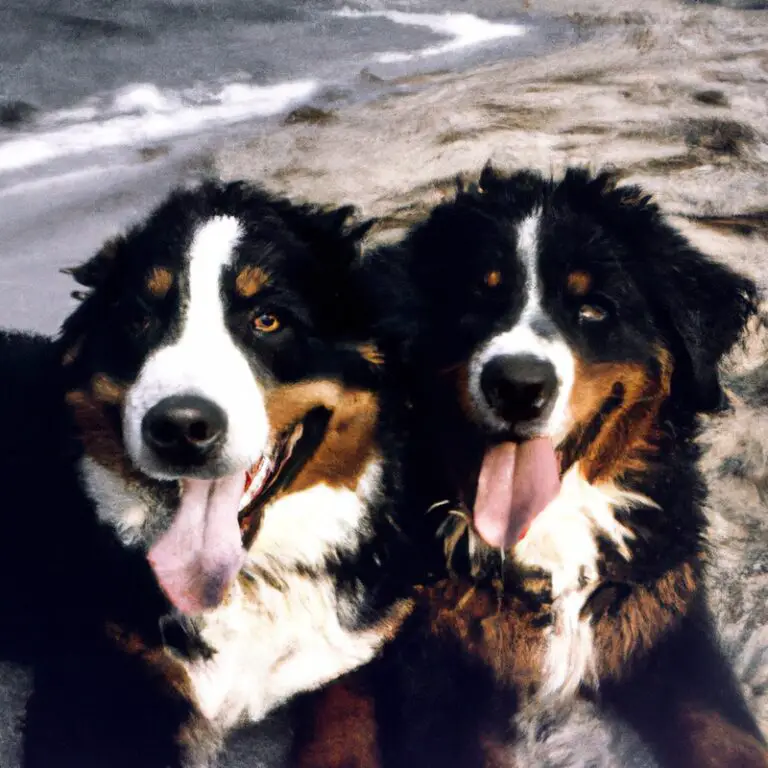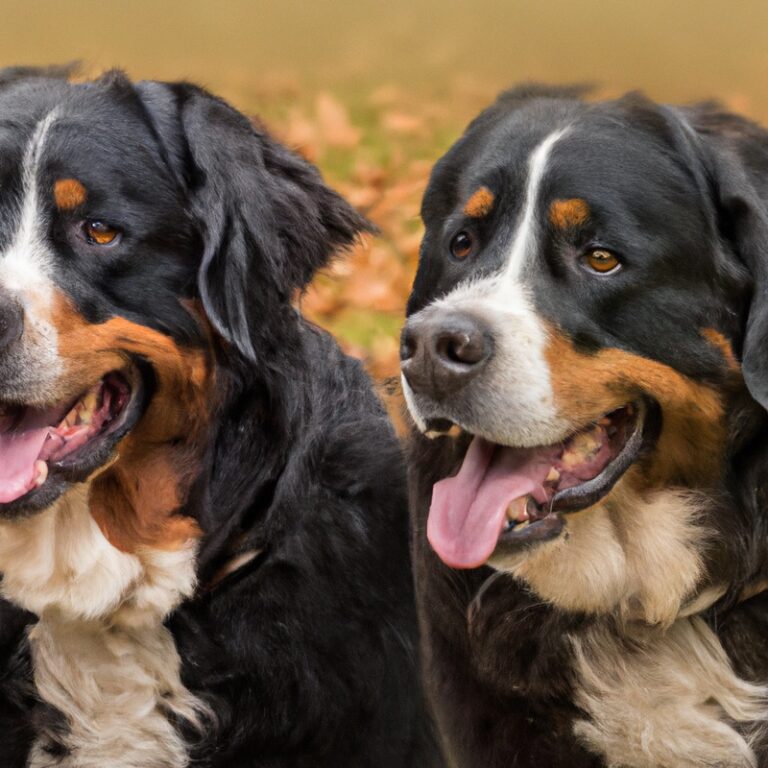What Are The Best Methods For Leash Training a Bernese Mountain Dog?
Key Takeaways:
- Establish a consistent routine and schedule for leash training sessions.
- Utilize positive reinforcement techniques to reward desired behaviors.
- Gradually introduce distractions to improve the dog’s focus and obedience.
- Patience and consistency are key to successfully leash training a Bernese Mountain Dog.
Are you struggling to leash train your Bernese Mountain Dog? You’re not alone.
These majestic pups are known for their gentle and affectionate nature, but their size and strength can make leash training a challenge.
Hi, I’m here to help! With years of experience and a deep understanding of Bernese Mountain Dogs, I’ve discovered the most effective methods for leash training these beautiful creatures. In this article, I’ll share my knowledge and expertise on how to introduce the leash, teach basic commands, and troubleshoot common challenges.
Get ready to transform your walks into enjoyable and stress-free experiences!
| Method | Description |
| Positive Reinforcement | Uses rewards and treats to reinforce desired behavior, such as walking calmly on a leash |
| Clicker Training | Involves using a clicker to mark desired behavior and provide positive reinforcement |
| Harness Training | Uses a harness instead of a collar to reduce pulling and provide control during walks |
| Consistency and Patience | Emphasizes the importance of consistent training and patient repetition to establish good leash manners |
| Professional Dog Trainer | Enlisting the help of a professional dog trainer who specializes in leash training for Bernese Mountain Dogs |
Understanding Bernese Mountain Dogs
Characteristics and behavior of Bernese Mountain Dogs
Bernese Mountain Dogs are known for their gentle and friendly nature.
They are a large breed, with a strong build and a thick, double coat.
These dogs are intelligent and trainable, making them excellent family pets.
However, they do require consistent socialization and training from an early age to ensure they grow up to be well-behaved and obedient.
Bernese Mountain Dogs are also known for their loyalty and love for their families, and they generally get along well with children and other pets.
They have a calm and patient temperament, but they may be reserved around strangers.
Regular exercise and mental stimulation are important for these dogs to keep them happy and healthy.
Overall, Bernese Mountain Dogs are wonderful companions who thrive in a loving and attentive home environment.
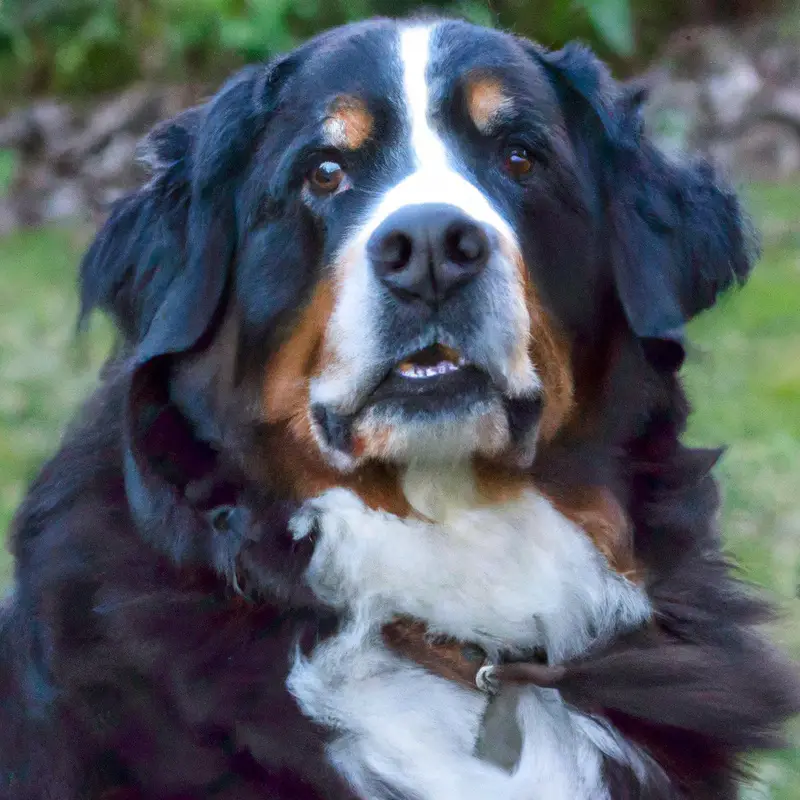
Importance of leash training for Bernese Mountain Dogs
Leash training is crucial for Bernese Mountain Dogs. It ensures their safety and the safety of others.
By teaching them to walk calmly on a leash, you can prevent them from running off or getting into situations where they could be harmed.
Additionally, leash training promotes good behavior and helps establish you as the leader. Start training early, use positive reinforcement, and be patient.
With consistent practice, your Bernese Mountain Dog will become a well-behaved and obedient companion on walks.
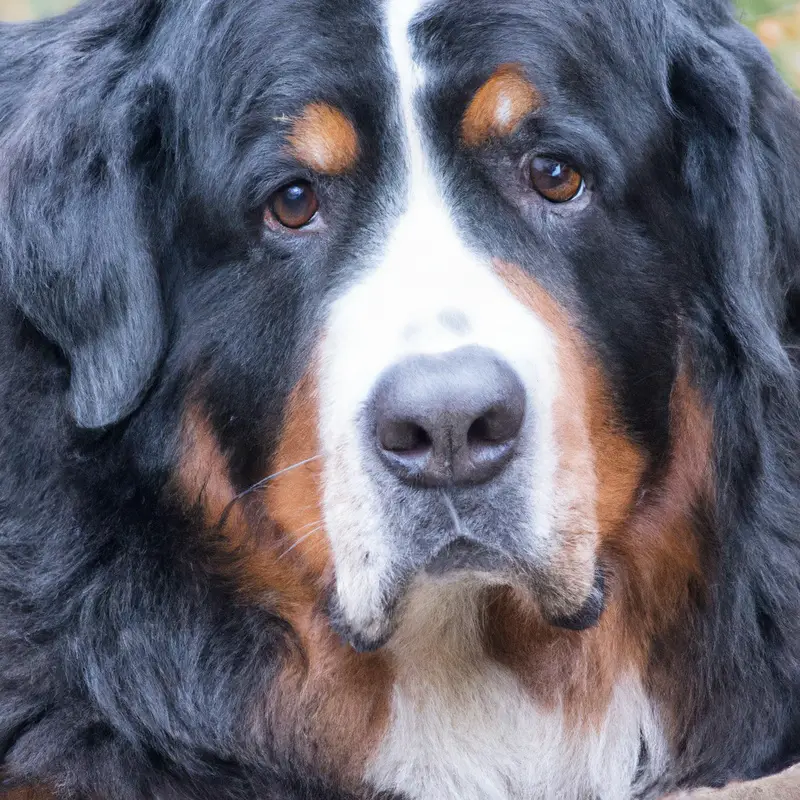
Basic Leash Training Techniques
Introducing the leash to your Bernese Mountain Dog
Introducing a leash to your Bernese Mountain Dog is an important step towards successful leash training. To start, let your dog familiarize themselves with the leash by letting them sniff and explore it.
Next, attach the leash to your dog’s collar and let them walk around with it indoors before progressing to outdoor walks.
Reward your dog with treats and positive reinforcement to make the experience enjoyable. Keep initial training sessions short and gradually increase their duration.
Remember, patience and consistency are key!
Teaching your Bernese Mountain Dog to walk on a loose leash
Teaching your Bernese Mountain Dog to walk on a loose leash is all about consistency and positive reinforcement.
Start by using a comfortable, properly fitted harness or collar.
Keep the leash slack and hold it close to your body.
When your dog pulls, stop and wait for them to relax and come back to your side.
Reward them with treats and praise when they walk calmly beside you.
Practice in different environments to reinforce the behavior.
Patience is key—remember, it’s a learning process!
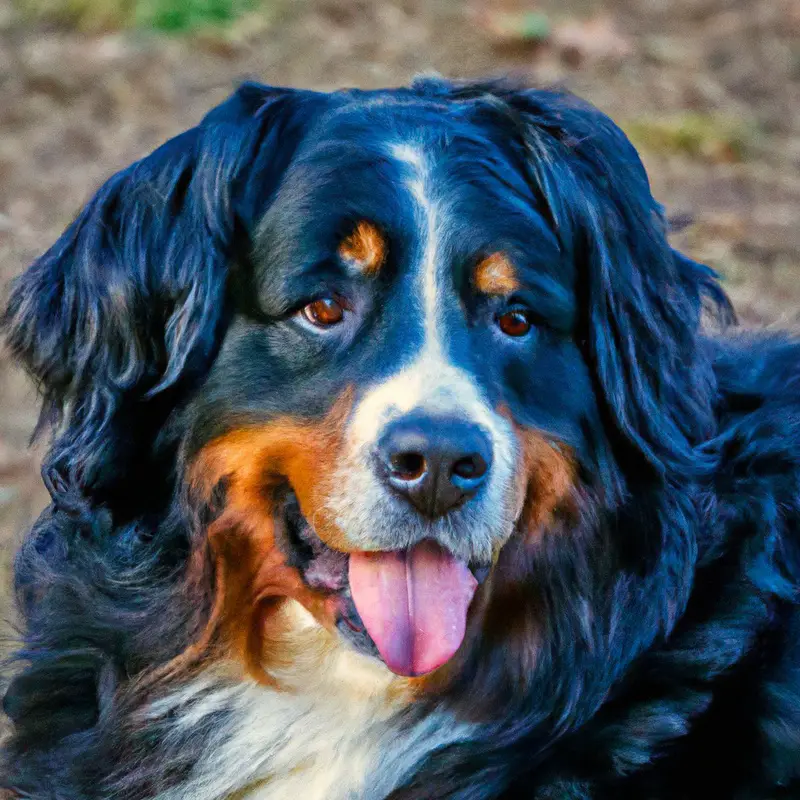
Teaching your Bernese Mountain Dog basic commands on leash
To teach your Bernese Mountain Dog basic commands on leash, start by introducing one command at a time. Use clear and consistent verbal cues, along with hand signals if desired.
Begin training in a quiet, distraction-free area before gradually increasing difficulty.
Reward your dog with treats or praise for correctly obeying commands. Practice regularly, keeping sessions short and positive.
Be patient, as it takes time for your Bernese Mountain Dog to learn and master each command.
Leash training can be a fun and rewarding bonding experience for both of you.
Positive Reinforcement Training Methods
Using treats and rewards for effective leash training
Using treats and rewards is an effective method for leash training your Bernese Mountain Dog.
When your dog walks calmly on the leash without pulling, give them a treat or reward to reinforce the behavior.
Positive reinforcement encourages your dog to repeat good leash behavior.
Make sure to select high-value treats that your dog finds motivating.
Additionally, use praise and verbal cues like “good job” or “walk nicely” to reinforce the desired behavior.
Consistency and patience are key when using treats and rewards for leash training.
Clicker training for leash manners
Clicker training is a great way to teach leash manners to your Bernese Mountain Dog. Start by associating the clicker sound with rewards like treats.
When your dog walks nicely on the leash, click the clicker and give them a treat.
Repeat this process consistently to reinforce good leash behavior. Gradually increase the duration of good behavior before clicking and rewarding.
Practice in different environments to generalize the behavior.
With consistency and positive reinforcement, your dog will learn to walk politely on the leash.
Incorporating praise and play during leash training sessions
During leash training sessions with your Bernese Mountain Dog, it’s important to incorporate praise and play.
By providing positive reinforcement through praise and rewards, you can motivate your dog and make the training experience enjoyable for both of you.
When your dog follows commands or walks nicely on the leash, give them verbal praise and a treat.
Additionally, incorporating playtime during breaks can help reinforce good behavior and create a positive association with leash training.
Remember to keep the sessions short and frequent for optimal results.
Troubleshooting Leash Training Challenges
Dealing with pulling and lunging behaviors
Dealing with pulling and lunging behaviors can be a challenge when leash training your Bernese Mountain Dog. Here are a few tips to help address these behaviors:
- Use positive reinforcement: Reward your dog with treats or praise when they walk calmly beside you without pulling or lunging.
- Use a no-pull harness or head halter: These tools can provide better control and discourage pulling and lunging.
- Practice obedience training: Teaching your dog commands like “heel” or “leave it” can help redirect their attention and prevent pulling and lunging.
- Consistency is key: Be patient and consistent in your training efforts. It may take time for your dog to learn and break these behaviors.
- Seek professional help if needed: If the pulling and lunging behaviors persist, consider consulting a professional dog trainer or behaviorist for guidance.
Remember, every dog is unique, so it’s important to find the methods that work best for your Bernese Mountain Dog to ensure a safe and enjoyable walking experience.
Overcoming fear or anxiety during leash walks
To overcome fear or anxiety during leash walks, start by introducing your Bernese Mountain Dog to the leash gradually. Begin by simply allowing them to sniff and explore the leash in a calm environment.
Next, attach the leash and let them walk around freely indoors.
Gradually increase the duration and intensity of the walks, always using positive reinforcement and rewards. It’s important to remain patient and calm throughout the process to help build your dog’s confidence.
Additionally, consider using treats or toys as distractions during walks to redirect their focus.
Finally, consult a professional dog trainer if needed for additional guidance.
Addressing distractions and leash reactivity
Leash training a Bernese Mountain Dog can be challenging when it comes to addressing distractions and leash reactivity.
To tackle this, start by gradually exposing your dog to distractions in a controlled environment.
Use positive reinforcement techniques to reward calm behavior and redirect their focus when they become reactive.
Additionally, consider using a front-clip harness or head halter to provide better control during walks.
With patience, consistency, and a positive approach, you can help your Bernese Mountain Dog overcome leash reactivity and distractions.
Advanced Leash Training Techniques
Teaching your Bernese Mountain Dog to walk without pulling
Teaching your Bernese Mountain Dog to walk without pulling is a process that requires consistency and patience.
Here are some tips to help you with this training:
- Start with short leash walks in a low-distraction environment. Gradually increase the length and difficulty of your walks as your dog becomes more comfortable.
- Use positive reinforcement techniques, such as treats or praise, to reward your dog for walking calmly by your side.
- Practice the “stop and go” method. When your dog starts pulling, stand still and wait for them to return to your side. Only resume walking once they are calm and by your side.
- Use a no-pull harness or head collar to give you more control over your dog’s movements. These tools can help redirect pulling behavior without causing discomfort.
- Consider enrolling in a training class or working with a professional dog trainer who can provide guidance and additional techniques tailored to your dog’s specific needs.
Remember, consistency and positive reinforcement are key when teaching your Bernese Mountain Dog to walk without pulling.
With time and practice, you can enjoy peaceful and enjoyable walks with your furry friend.
Off-leash training for advanced control and obedience
To achieve advanced control and obedience during off-leash training, focus on three key principles:
- Establish a strong foundation of basic obedience commands such as “sit,” “stay,” and “come” using positive reinforcement.
- Gradually introduce off-leash training in a secure and controlled environment, starting with shorter distances and gradually increasing the level of distractions.
- Use a reliable recall command paired with enticing rewards to reinforce your dog’s responsiveness and reinforce their training. Practice consistency and patience to strengthen off-leash control.
Frequently Asked Questions about Leash Training Bernese Mountain Dogs
At what age should I start leash training my Bernese Mountain Dog?
You can start leash training your Bernese Mountain Dog as early as 8 to 10 weeks old. This is a good age to gradually introduce them to wearing a collar and walking on a leash.
Start with short, positive training sessions and gradually increase the duration as your puppy becomes more comfortable.
Consistency and patience are key during this process. Ensure that your puppy has had all their necessary vaccinations before taking them outside for walks.
How long does it take to leash train a Bernese Mountain Dog?
Leash training a Bernese Mountain Dog can vary in duration, as it depends on various factors such as the dog’s individual temperament, previous training experiences, and consistency in training.
On average, it may take several weeks to a few months to fully leash train a Bernese Mountain Dog.
Patience, positive reinforcement, and regular practice are key to success.
Taking the time to understand your dog’s needs and abilities will help make the training process more effective and enjoyable for both you and your furry friend.
Can I use a harness instead of a collar for leash training?
Yes, you can use a harness instead of a collar for leash training your Bernese Mountain Dog. Harnesses can be a great alternative, especially for dogs that tend to pull or have respiratory issues.
They distribute the pressure more evenly across your dog’s body, reducing strain on their neck and throat.
Look for a harness that fits well and is designed for leash training. This will ensure comfort and control during your walks.
Remember, every dog is unique, so it is important to find what works best for your Bernese Mountain Dog.
Final Verdict
Leash training is an essential aspect of owning a Bernese Mountain Dog.
By understanding their characteristics and using positive reinforcement techniques, you can successfully train your Bernese to walk on a loose leash and follow basic commands.
It’s important to address any challenges that may arise, such as pulling or anxiety, and to continue training for advanced control and obedience.
Starting leash training early and using the proper equipment, such as a collar or harness, will greatly contribute to your success.
Remember, patience, consistency, and a positive attitude are key.
With dedication and the right methods, you can enjoy peaceful and enjoyable walks with your Bernese Mountain Dog by your side.




